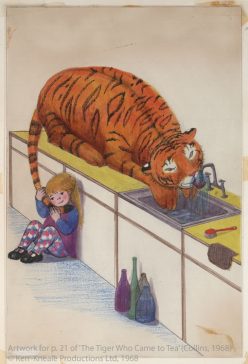Jacqueline Ho, MLitt Student
Who do you immediately think of when you hear Fantastic Beasts and Where to Find Them? J.K. Rowling? Eddie Redmayne? There is, however, someone else who is worth just as much praise – Olivia Lomenech Gill, illustrator of the latest edition of Fantastic Beasts and Where to Find Them. Last week, I had the privilege to celebrate the book’s exclusive launch with Olivia at Seven Stories, a place I’ve longed to visit.
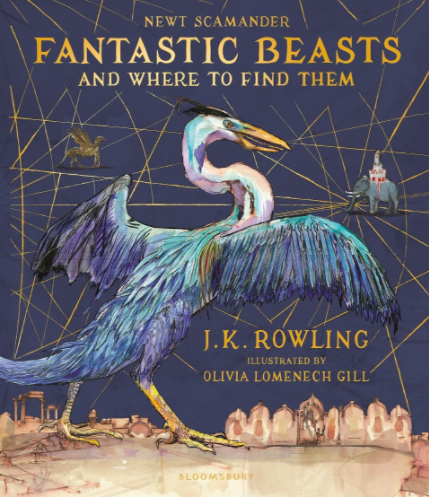
Stepping into the attic, I was completely mesmerised by the atmosphere: warm, welcoming, magical.

Olivia began her discussion on the creative process behind Fantastic Beasts by sharing one of her very first paintings, a horse, made when she was 6-years-old. Ever since, horses have become her long-term working partner. Before illustrating Fantastic Beasts, Olivia worked with Michael Morpurgo. Where My Wellies Take Me (2012) was her debut illustration project. She was then invited to draw pictures for War Horse. Here is one of them, Standing To:
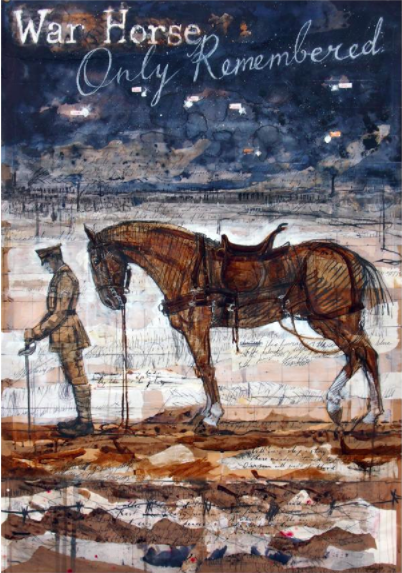
After many years of working with horses, Olivia began on Fantastic Beasts, a rather challenging project. Taking roughly eighteen months to complete, Olivia began the project by studying and sketching animals from real-life and Greek Mythology. Some beasts pure products of Rowling’s imagination, Olivia found them difficult to create. Once she had tackled the beasts’ general appearance, Olivia sought to make the creatures believable to the readers, visiting zoos and studying special animal collections and archives.
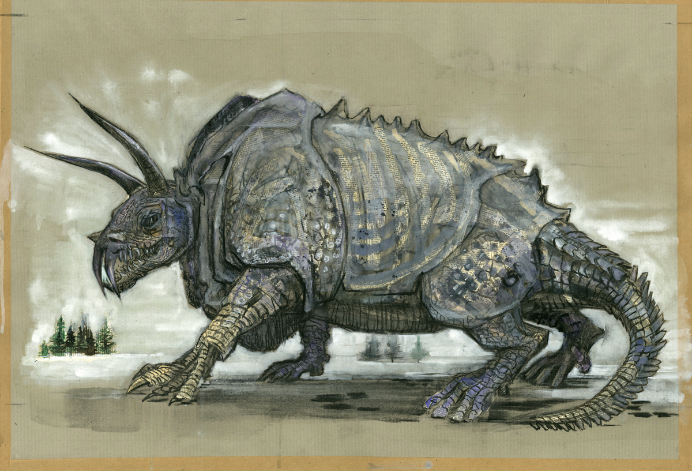
Living in the generation of technology and social media, computer software like Photoshop and Adobe Illustrator are popular among many contemporary designers and artists. When illustrating creatures, many may also choose to take film footage of animals “in the field” for later use. Not Olivia. She prefers the traditional way: working in situ wherever she can with pencil, charcoal and sketchbook.
Olivia believes doing rough sketches by hand somehow helped her to develop an intimate relationship with animals, and thus aids her illustration work. She also makes animal models. For example, to develop her design of the Acromantula, she created a model of a spider-like insect in her studio.
Olivia’s studio also plays a great role in the illustration process. She designed and built her studio, a strong believer that architecture affects one’s working process. It attracts many creatures, such as birds and insects. At times disturbing and troublesome, Olivia was ultimately thankful for their presence throughout this project; it was fitting that in illustrating creatures some live ones should have been present.
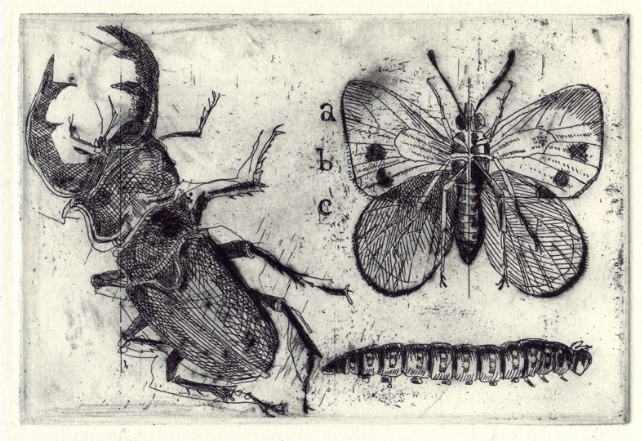
What struck – and inspired – me most was Olivia’s modesty and honesty. This project had panicked her, she admitted. I’m not a good illustrator; my drawings aren’t good enough. On the contrary, Olivia truly is a fantastic illustrator. I empathise with her and see my own struggles as a researcher reflected in Olivia’s as an illustrator. Just as Olivia must spend lots of time “in the field” and make copious preparatory sketches, so in literary studies a researcher must spend lots of time in the library, reading, making notes, forming and employing the right methodology. But when it is something you love – as illustrating is for Olivia and researching for me – take courage, push on through the difficulties and moments of self doubt, do the best you can and you’ll be surprised at just how far you can go.
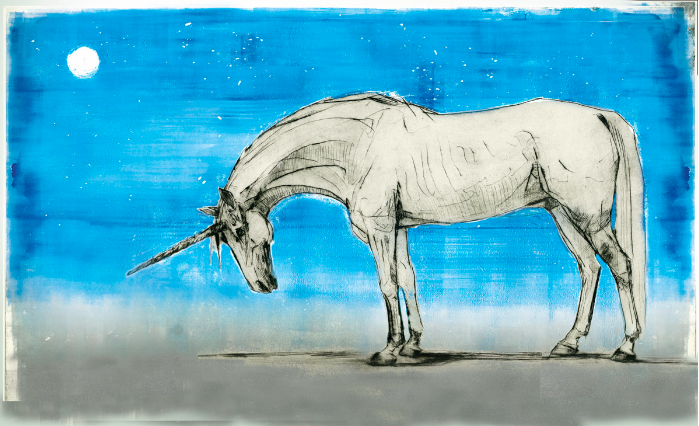
You can find further examples of Olivia’s illustrations on her website.
